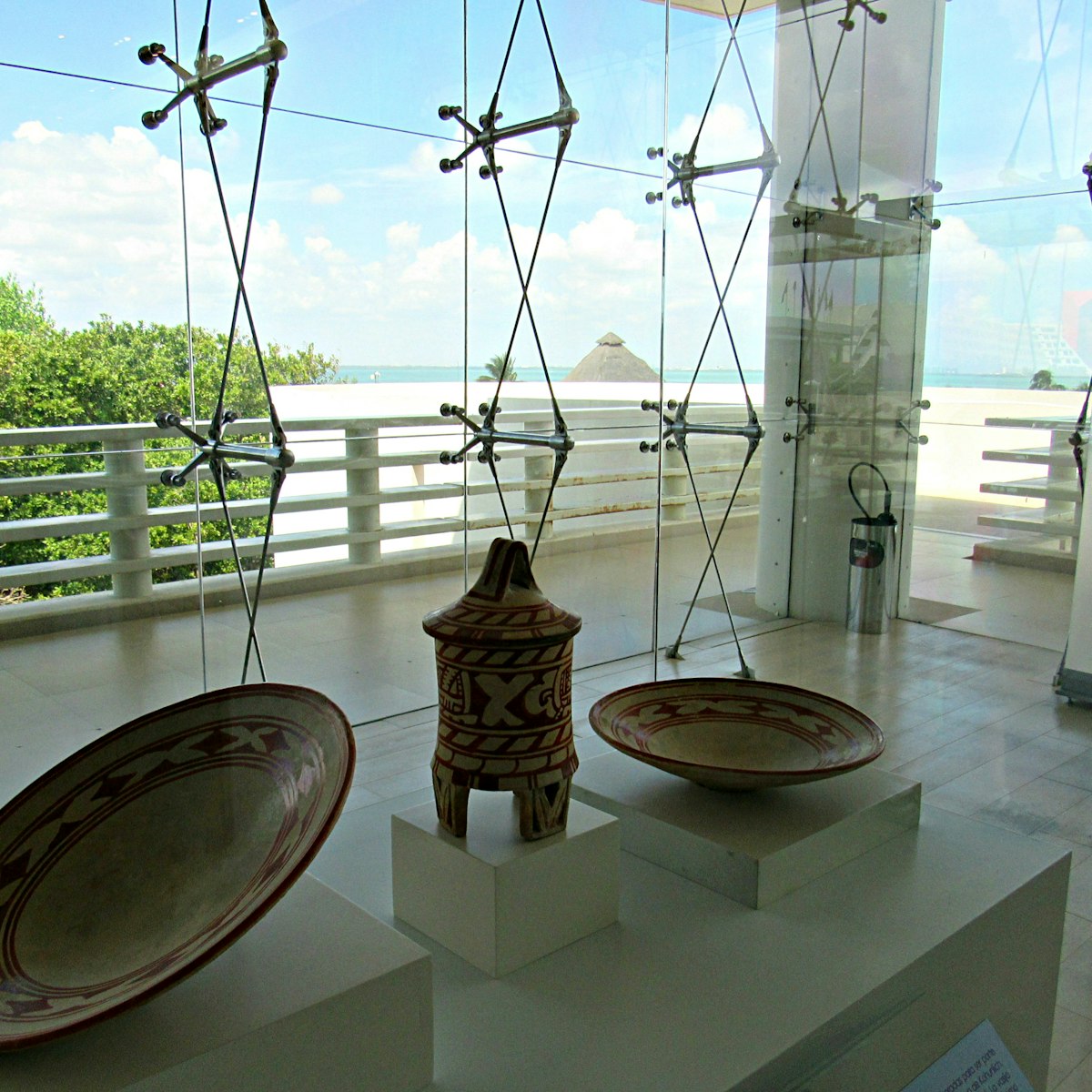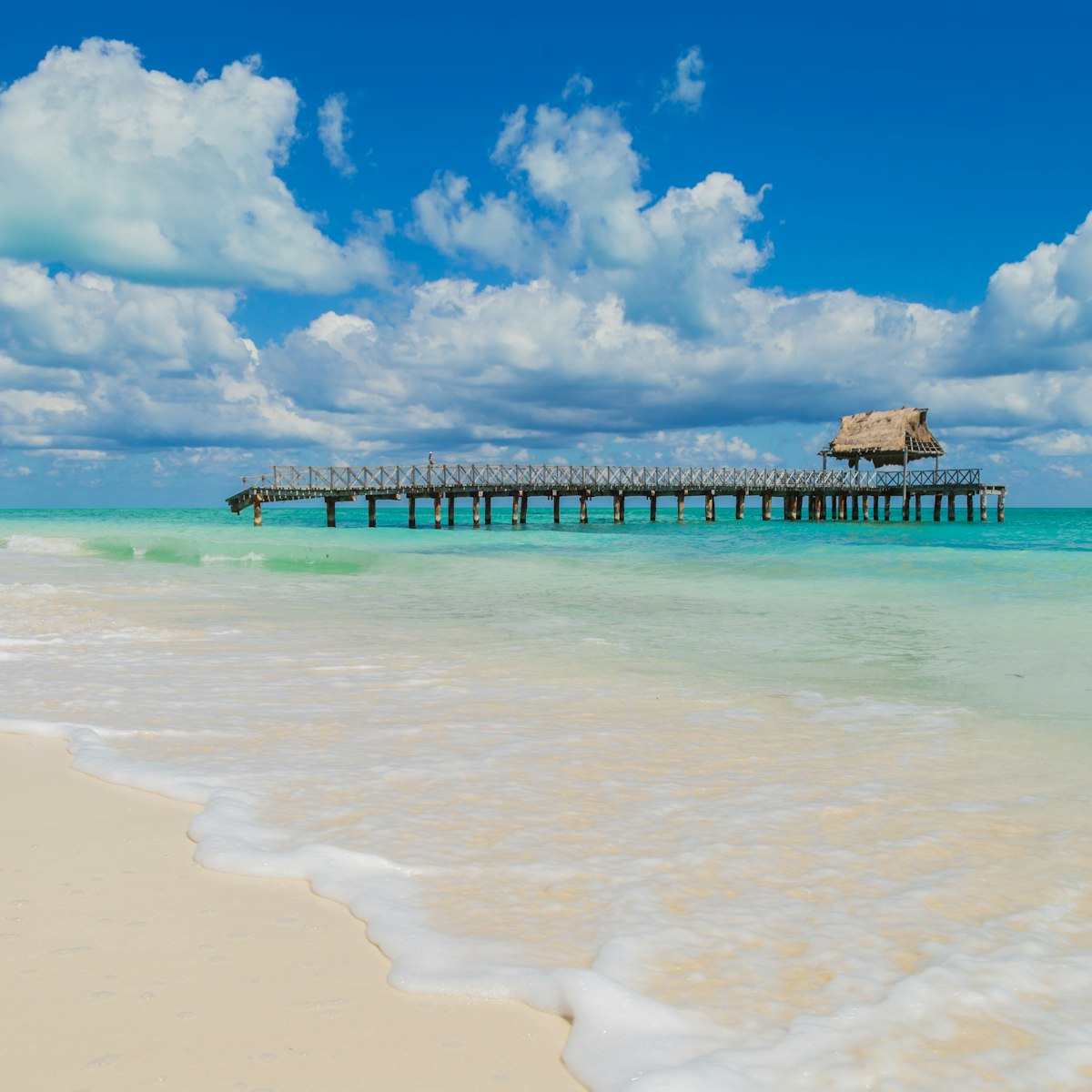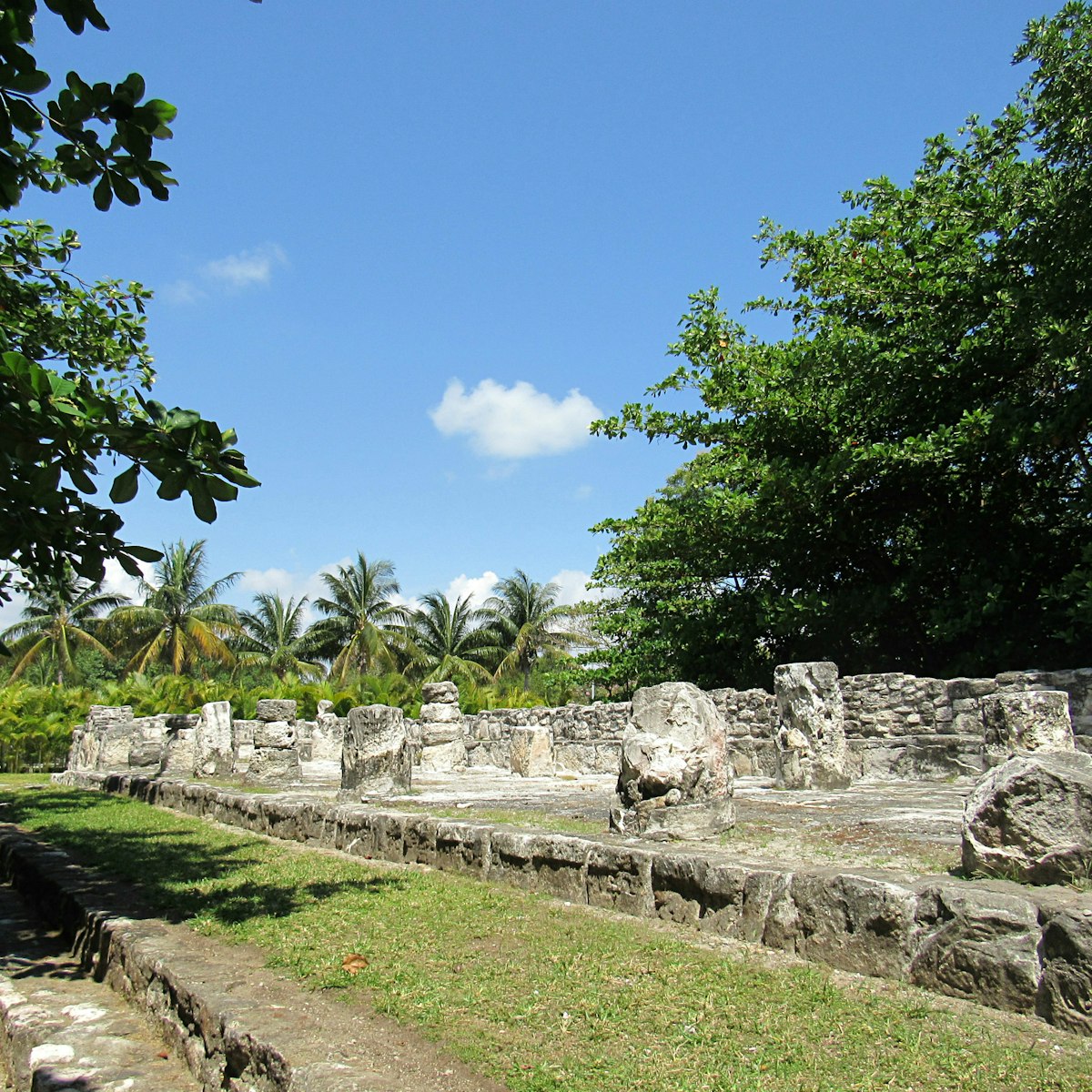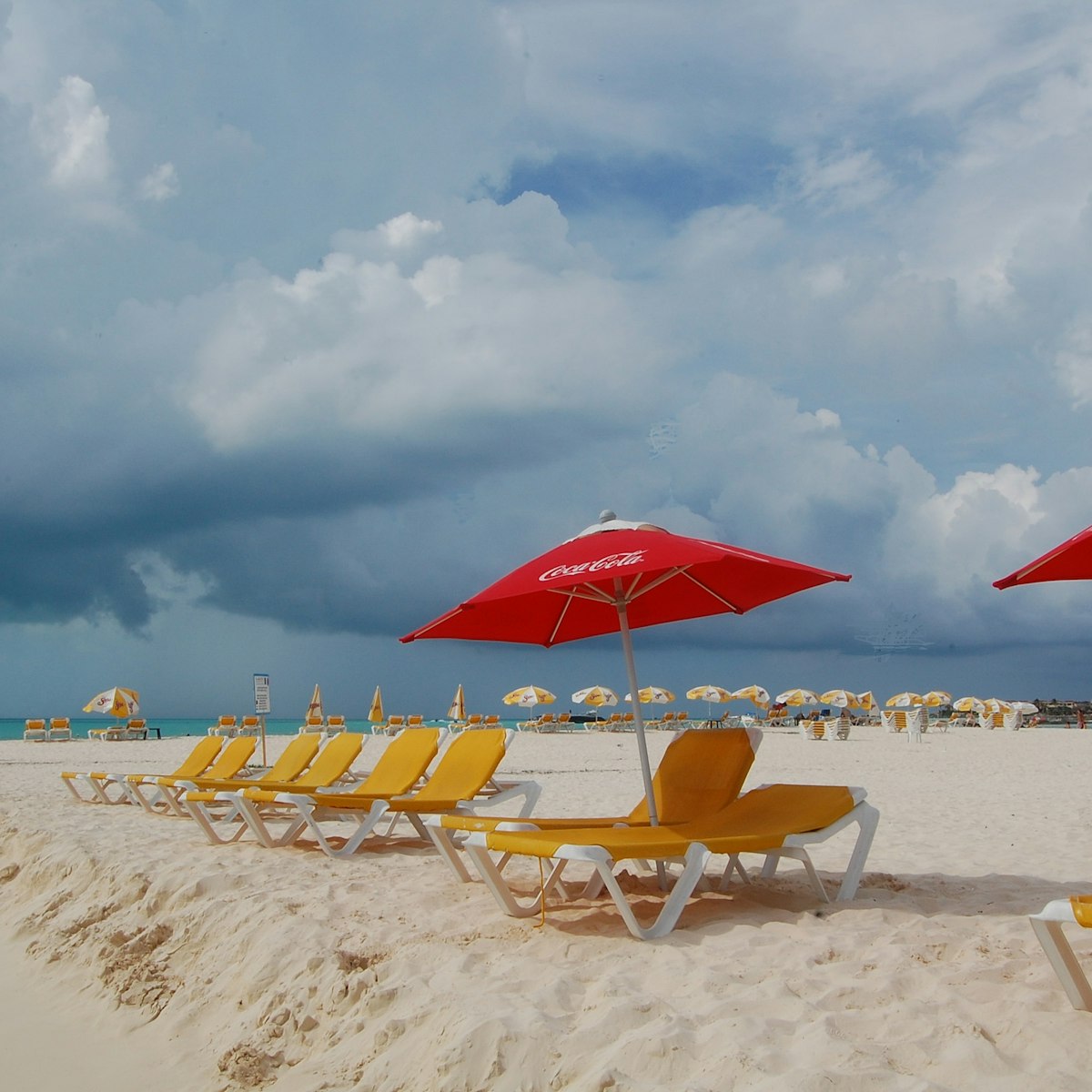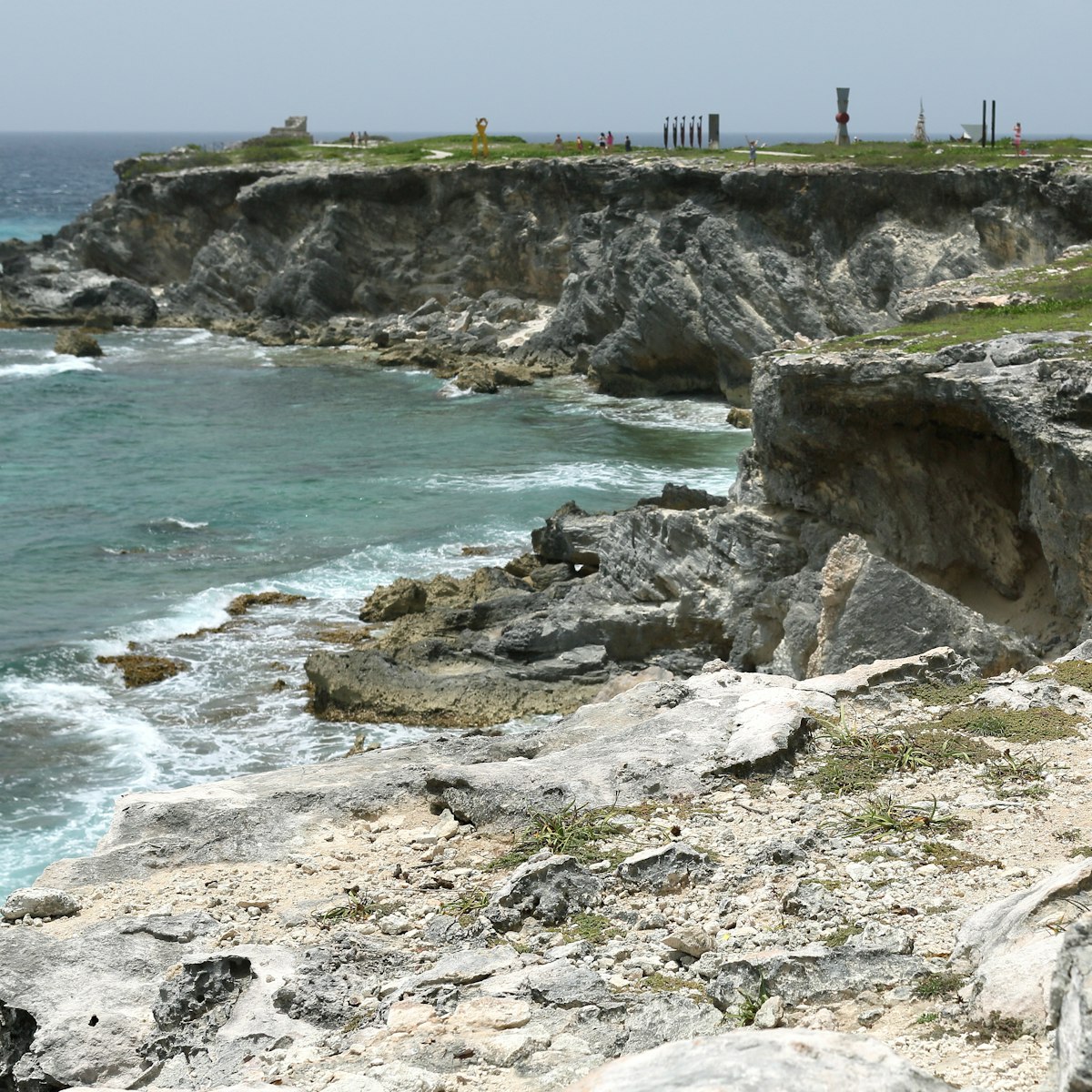A white sand beach with manta rays gliding through the shimmering turquoise waters. No hotels. No nightclubs. No roads or cars of any kind. It’s hard to believe you’re just 40km (about 25 miles) from Cancún. This is Isla Contoy: a pencil-like island and oft-overlooked national park that has been a wildlife sanctuary and research area for over 60 years. For a few fortunate visitors, Isla Contoy also is a magnificent day trip, a place to explore, to admire little-seen birds and sea creatures and to get a glimpse of what the region must have looked like long ago.
Isla Contoy location
Parque Nacional Isla Contoy is at the confluence of the Caribbean and the Gulf of Mexico, a short distance north of Cancún’s Isla Blanca. It’s just 8km long and 20m across at its narrowest point.
Meaning of Parque Nacional Isla Contoy
Parque Nacional Isla Contoy means Contoy Island National Park. The word “contoy” is of Maya origin but the exact meaning is disputed. Some say it is an amalgamation of the words “Kom” and ‘To’oy,” which together mean “low shelter” – a reference to the island’s shallow waters that have provided refuge to fishers, sailors and pirates for centuries. Others say “contoy” is a mispronunciation of the Maya word “pontó,” which means “pelican” – one of the most commonly seen birds on the island.
Ecology
Parque Nacional Isla Contoy is one of the most important nesting places of seabirds in the Mexican Caribbean. The island’s dense mangroves and lagoons provide ideal shelter for over 170 bird species like brown pelicans, olive cormorants, brown boobies, red flamingos and white herons. During the winter, over 10,000 birds call the small island home.
The island’s turquoise waters also mark the beginning of the Mesoamerican Barrier Reef, the second longest in the world after Australia’s Great Barrier Reef. Isla Contoy’s marine diversity includes over 240 species of tropical fish, crustaceans and eight species of rays. The park’s northern shores also are important nesting grounds for hawksbill, loggerhead and white turtles in the summer months. Whale sharks, too, are sighted nearby between May and September. The island has been protected from development for over 60 years, a big reason for its amazingly rich ecology today.
Isla Contoy history
As early as 300 BC, the Maya used Isla Contoy for fishing and as a place to collect shells and stingray spines, which were used for rituals, jewelry and small tools. The Maya didn’t construct any permanent settlements on the island, most likely due to the lack of fresh water. The only known ancient structure on the island are the ruins of a Maya shelling station, with fragments of carved shells and simple pottery found nearby. The arrival of the Spanish (and foreign-borne diseases) in the 16th century halted Maya travel to and from the island, and instead it became a place of rest and shelter for conquistadors exploring and plundering the region. By the early 1800s, Isla Contoy was primarily an outpost for local fishers.
It wasn’t until 1892 when the explorer John L. Stephens documented the remarkable number and variety of birds on Isla Contoy, that naturalists became aware of the existence the island. Over the course of the next century, ornithologists from near and far visited Isla Contoy, nicknaming it Isla de Pajaros (Island of Birds). Recognizing its ecological value, the Mexican government declared Isla Contoy a nature reserve in 1961, the first in the Yucatan Peninsula; it became a national park almost four decades later in 1998, encompassing 230 hectares (about 640 acres) of land and 49 sq km (19 sq miles) of ocean.
How to get to Isla Contoy
The only way to get to Parque Nacional Isla Contoy is on a guided tour from Cancún or Isla Mujeres. The national park limits its capacity to 200 visitors per day, with permission parceled out to a limited number of approved tour operators. These restrictions have served to protect and preserve the national park and its myriad creatures for decades.
Excursions
Several Cancún-based tour operators offer virtually identical trips to the national park: an early morning boat departure with a quick stop on Isla Mujeres, then open-water snorkeling on Ixlache Reef on the way to Isla Contoy, and finally arrival on to the island where visitors are given about three to four hours to explore its interpretive trails (either independently or with a bilingual guide), climb the 27m (88ft) observation tower or just relax on the beach. There’s also a small museum with exhibits on the island’s habitats. Continental breakfast, buffet lunch and open bar are normally included. Excursions run around US$100 for adults and US$80 for kids; hotel pickup also can be added for a small fee. Asterix Tours is a good option, providing reliable and high quality service.
Eating and sleeping
There are no hotels or restaurants on Isla Contoy, and camping is not permitted. Except for a few park rangers and biologists who reside on the island to monitor and study its ecosystem, Isla Contoy is completely uninhabited. Tour operators provide food and drink for guests.
Admission and other practicalities
Admission to Isla Contoy costs US$15 per person, including the docking fee and reef tax. This fee typically isn’t included in tour prices, and is collected when you arrive on the island. Be sure to bring cash; exact change also is appreciated.
Things you should know and bring
- Biodegradable sunscreen is the only kind of sunblock allowed in Isla Contoy’s waters in order to protect the reef and marine life. If you can’t find any, wear a long sleeve rash guard and hat instead.
- Bring binoculars for birdwatching.
- Wear comfortable shoes and mosquito repellant for light hiking on well-marked paths.
- Don’t forget to bring a bathing suit and towel.
- All tour operators provide snorkel gear.



